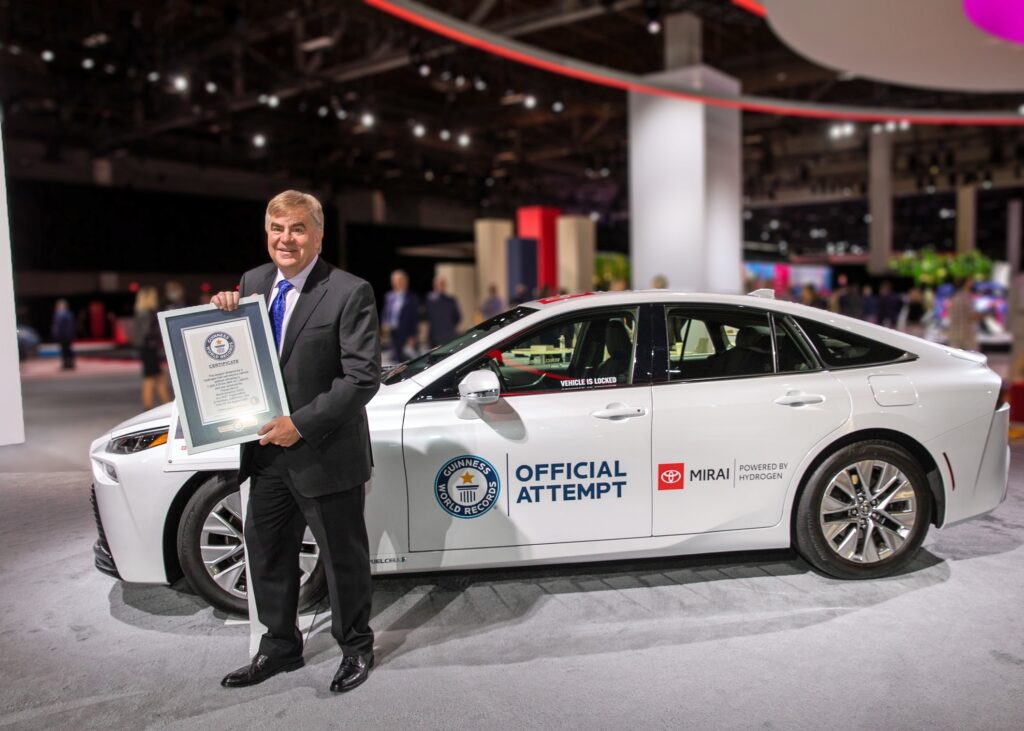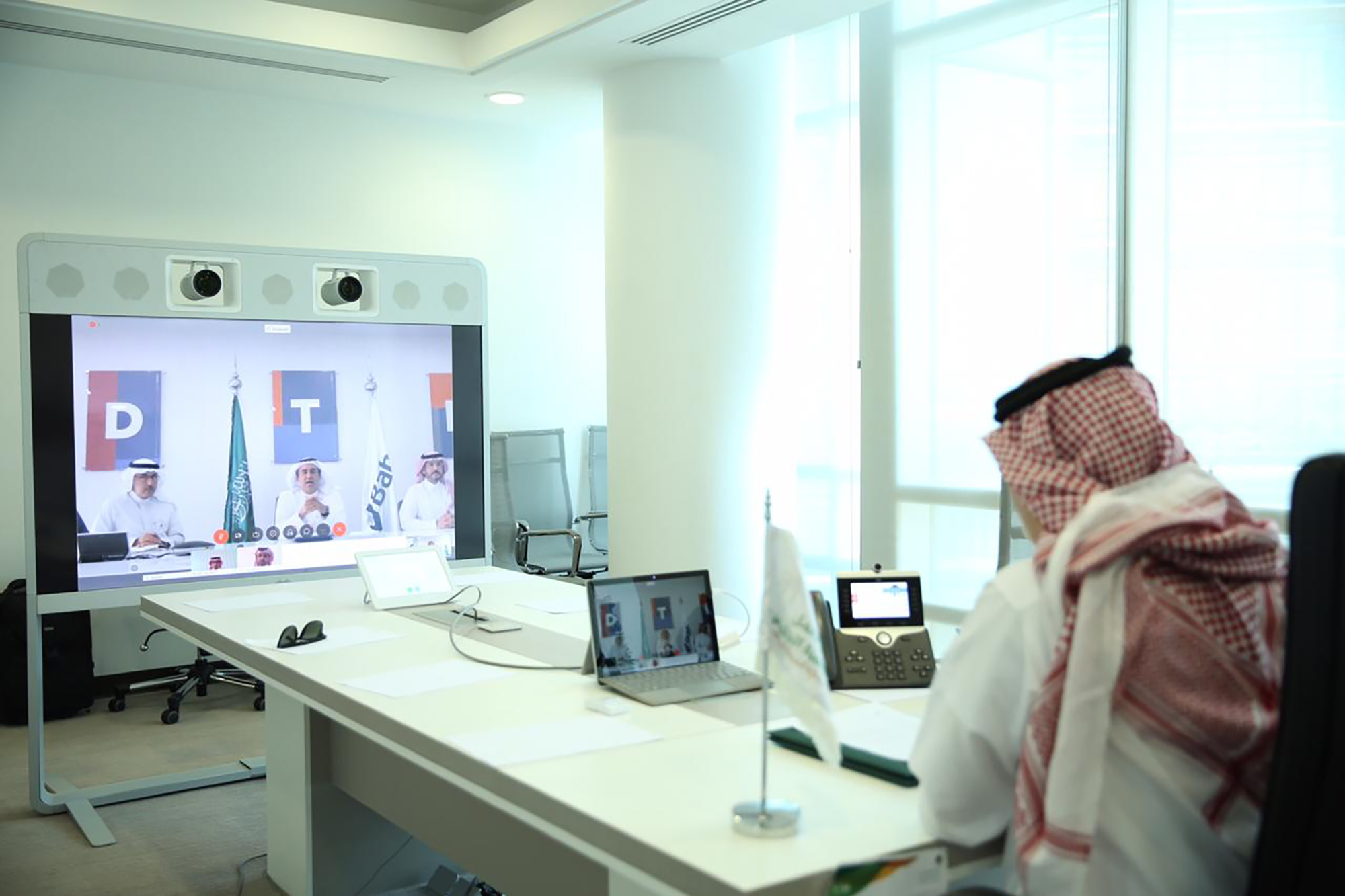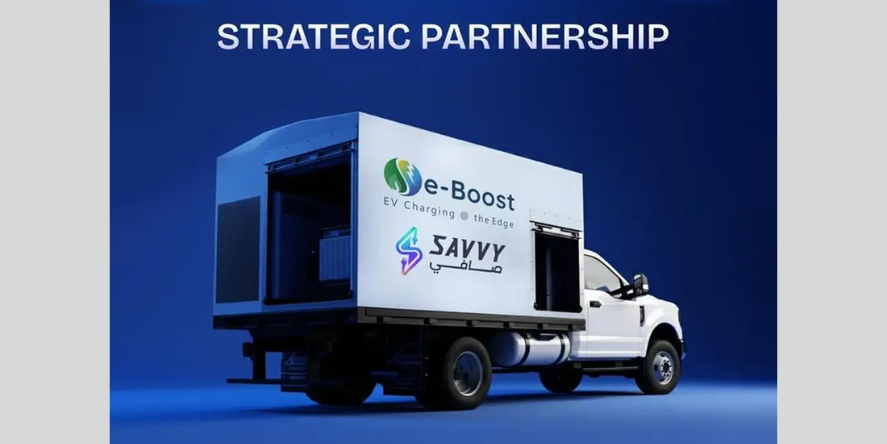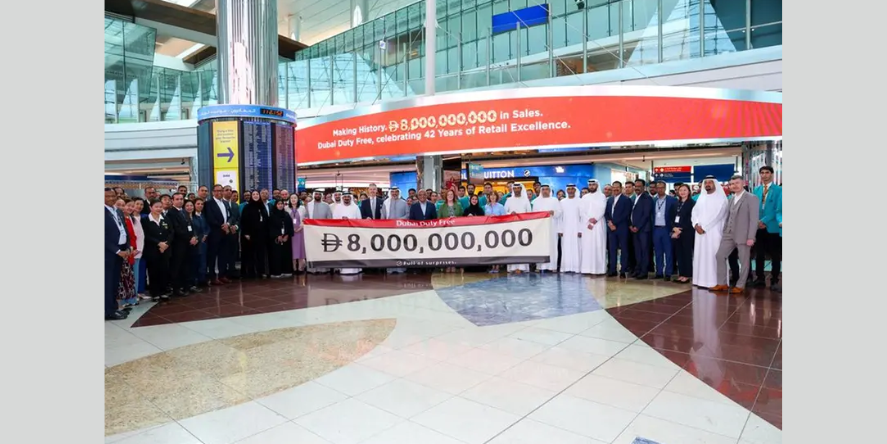Autocar major, Toyota announced in its deep-rooted commitment for sustainable mobility recently with unveiling of Toyota Mirai 2021, by entering the Guinness World Record, for longest distance travelled by a hydrogen Fuel Cell Electric Vehicle (FCEV) without refueling.

The firm claimed out that, the hydrogen Fuel Cell Electric Vehicle (FCEV), set up a new benchmark in its class accomplishing 1,360 km on a single, five-minute complete fill of hydrogen during a roundtrip tour of Southern California. With this feat, it entered the Guinness World Records title for setting up latest distance feat for zero emission vehicles.
As per the autocar major’s report, announcement, the official record attempted was closely monitored by Guinness World Records in accord with its strict rules, documentation procedures.
The Guinness World Record also judged the Toyota on parameter of efficiency-focused journey that took place on August 23 and 24, with the Mirai logging striking 64.6 km/L and manufacturing water as its only emission.
The firm also was prompt to validate that for ensuring the total transparency, Guinness World Records adjudicator Michael Empric authenticated the vehicle’s fuel tank with a seal at both the commencement, end of the voyage.
As per the firm’s reports, The Mirai was driven by professional hypermiler Wayne Gerdes and co-piloted by Bob Winger. Its two-day trip begun at the Toyota Technical Center (TTC) in Gardena, California, home of Toyota’s fuel cell development group. Firm also announced that, the duo travelled south to San Ysidro, then north to Santa Barbara voyaging through Santa Monica, Malibu beach along the Pacific Coast Highway. The vehicle reverted back to TTC that evening logging 761 km with only two driver swaps.
Firm also reported that, on the commencement of the second day, team pushed through 599 more kilometres of morning and afternoon rush hour traffic on the San Diego freeway until the Mirai had no hydrogen left, cruised into TTC with overall net 1,360 km driven, as witnessed by Guinness World Records judge Michael Empric.
Statement from Guinness World Records judge Michael Empric
Michael Empric, commented that, “As a Guinness World Records adjudicator for 10 years, I’ve had the opportunity to witness incredible attempts, including several distance-related feats. He also further added that, Toyota Mirai’s journey without the need to refuel showcases the power of fuel cell electric technology. This technology and the design ingenuity by the team at Toyota led to a history-making moment.”
Statement by Kei Fujita, Chief Representative, Middle East, Central Asia Representative Office, Toyota Motor Corporation
Kei Fujita, Chief Representative, Middle East, Central Asia Representative Office, Toyota Motor Corporation, commented pleasingly that, “we are delighted to achieve this landmark for sustainable mobility with the Mirai, a pioneering vehicle that heralds a new era of efficient electrified and hydrogen-driven transportation. This comes as part of our continuing drive to develop diversified mobility solutions that offer people more ways to move safely, responsibly, and in harmony with the environment.”
He added out further that, “With car buyers around the world becoming increasingly eco-conscious, we are confident that the Mirai will set a precedent for future vehicles that will help to create a carbon-neutral society where people can enjoy a happy, healthy, and sustainable life, with greater mobility for all. I would like to thank our customers for their support, which continues to inspire us on our journey to develop ‘ever-better’ cars for a more sustainable tomorrow.”

The firm further announced out that, within the closure time of the voyage, Mirai, had overall consumed 5.65kg hydrogen, passing out total of 12 hydrogen stations along the voyage routes without refuelling.
Firm also further commented out that “Mirai was motivated mainly during rush hour traffic in temperatures between 18 to 28 degrees Celsius. It discharged zero pounds of CO2, whereas a standard internal combustion engine vehicle would have emitted about 301 kg of CO2 over the same distance.”
The firm also added out that “the 2021 Toyota Mirai is a rear-wheel-drive sports-luxury FCEV that offers a combination of striking design, cutting-edge technology, and premium driving performance. Toyota’s advanced technology enables the vehicle to produce its own electricity using an onboard fuel cell. It was initially developed in 1992, FCEV technology alters hydrogen, oxygen into electricity to power an electric motor, with only water as a by-product. The latest-generation Mirai offering out a class-leading cruising range, it can also be refuelled in just 3 to 5 minutes.”
Press Release received on Mail










